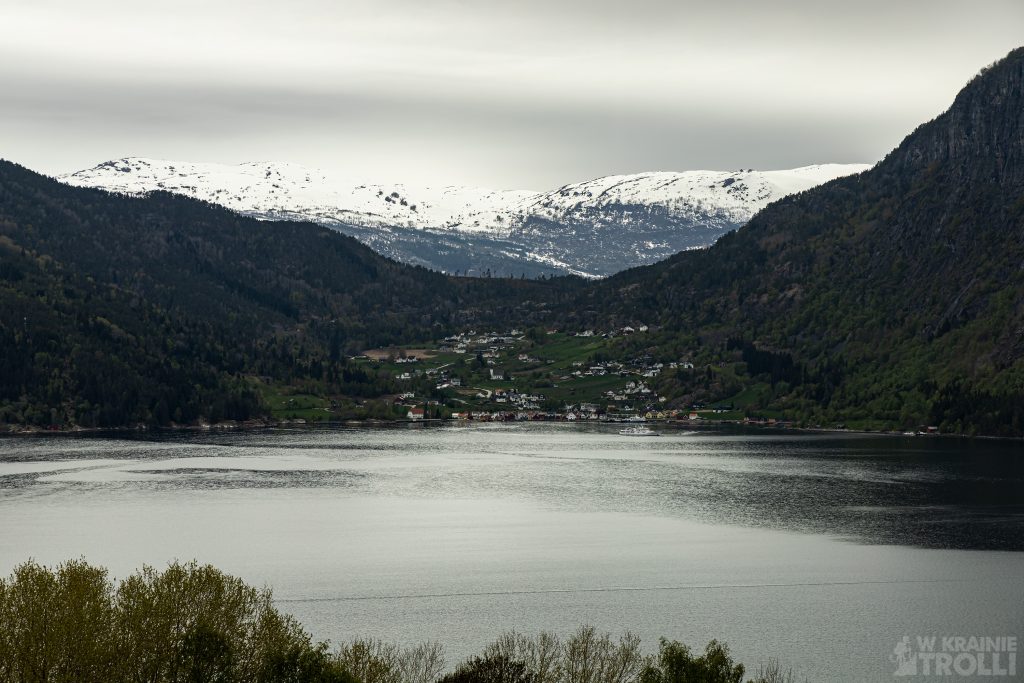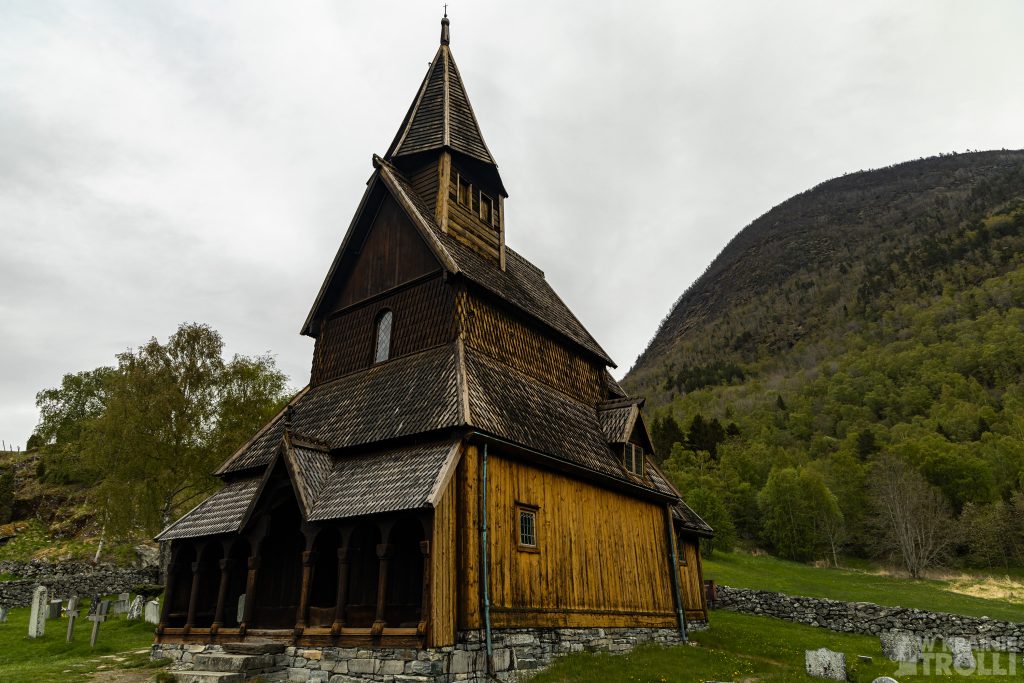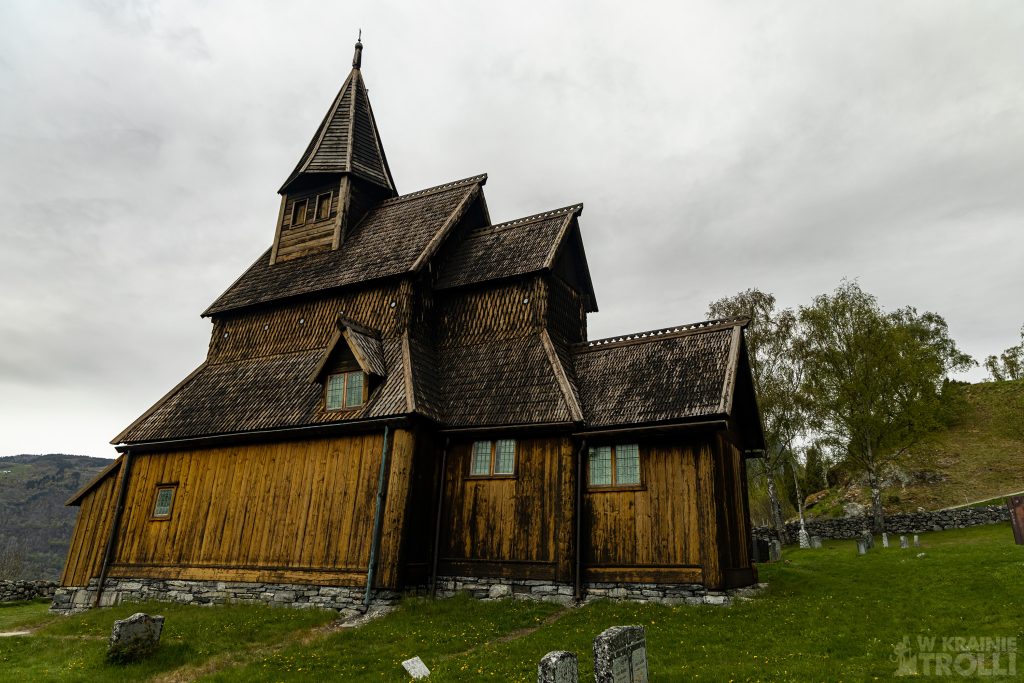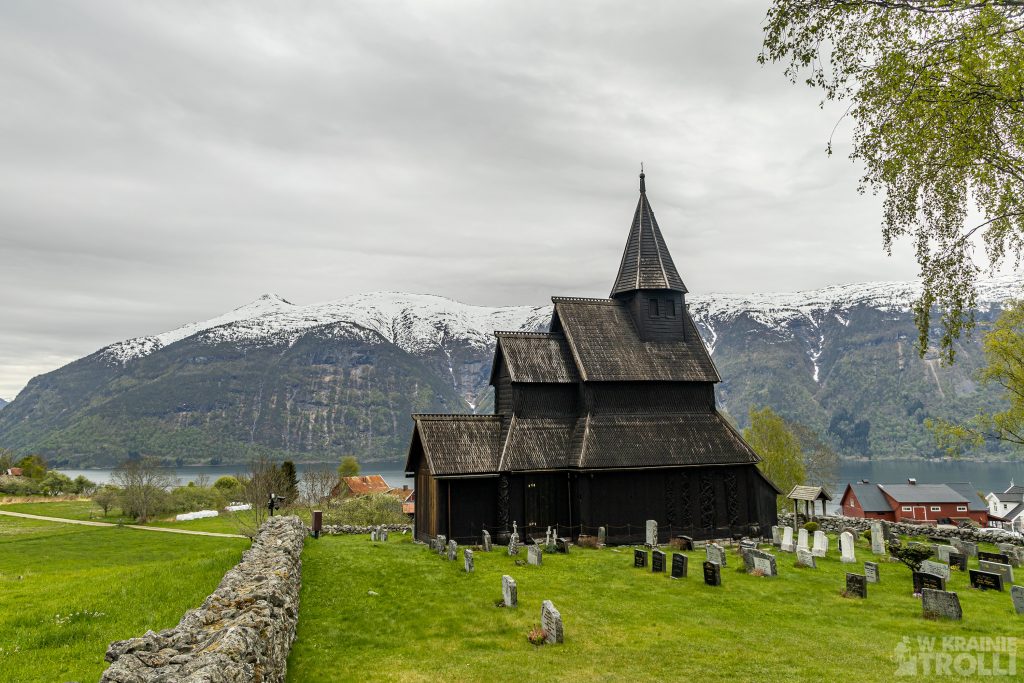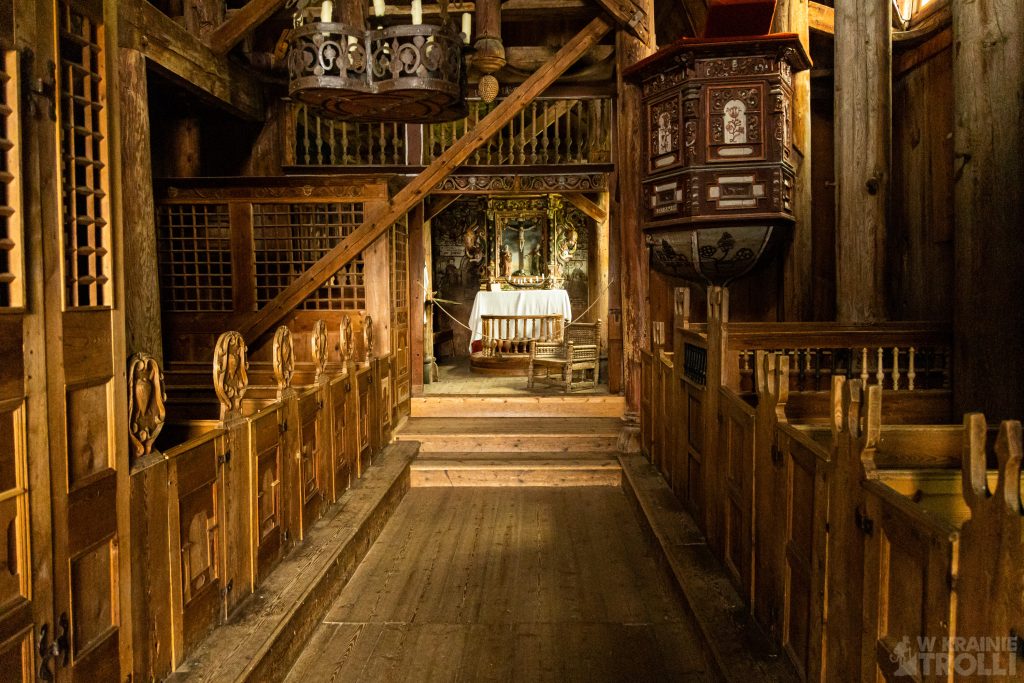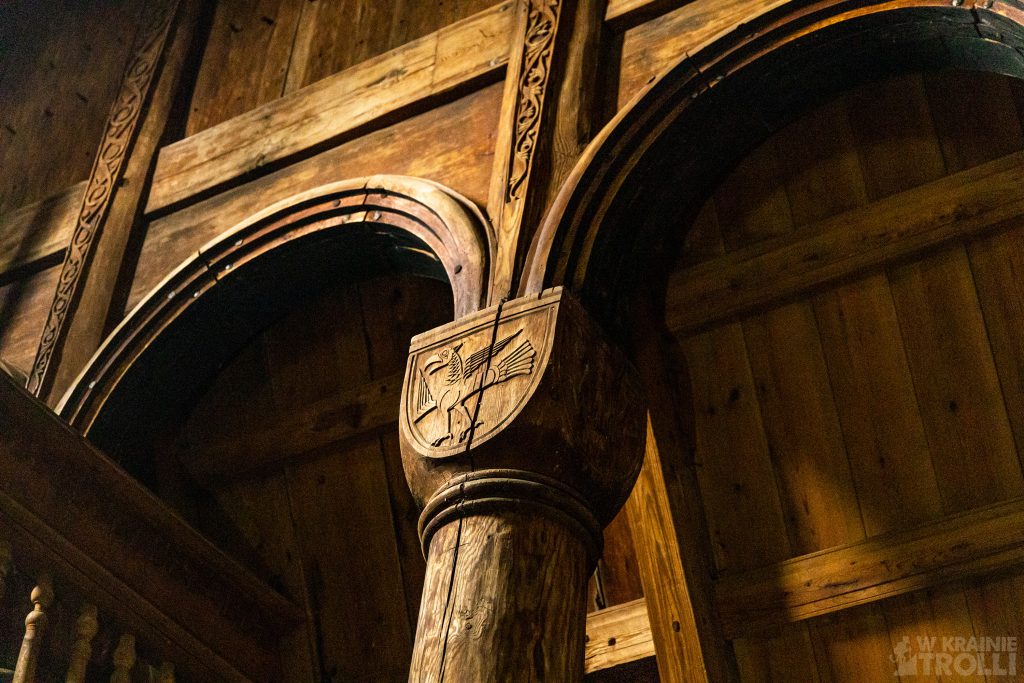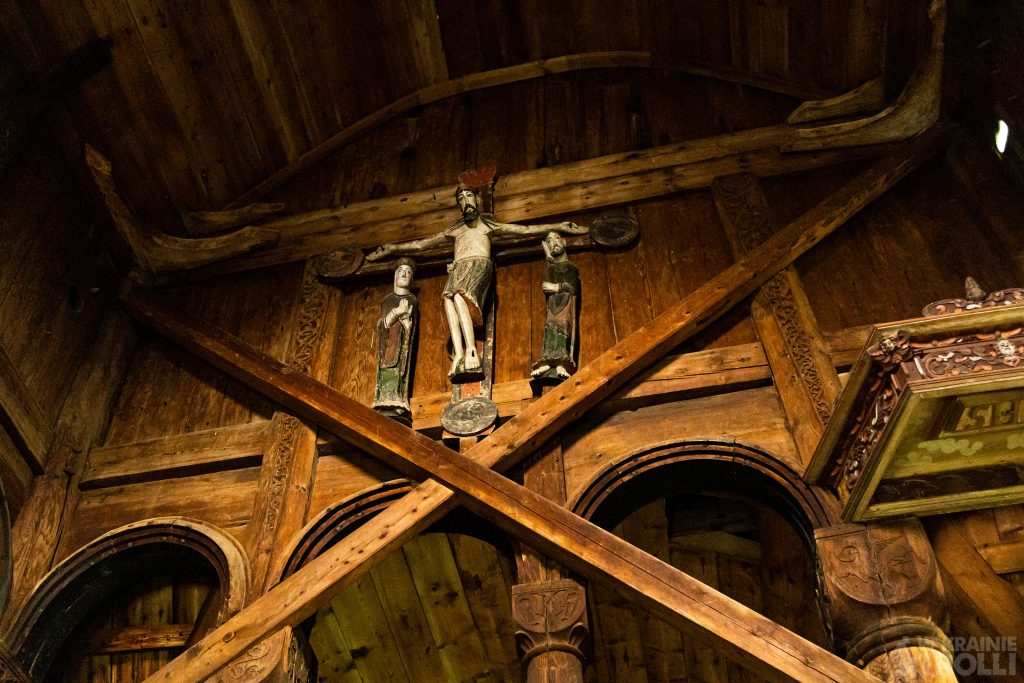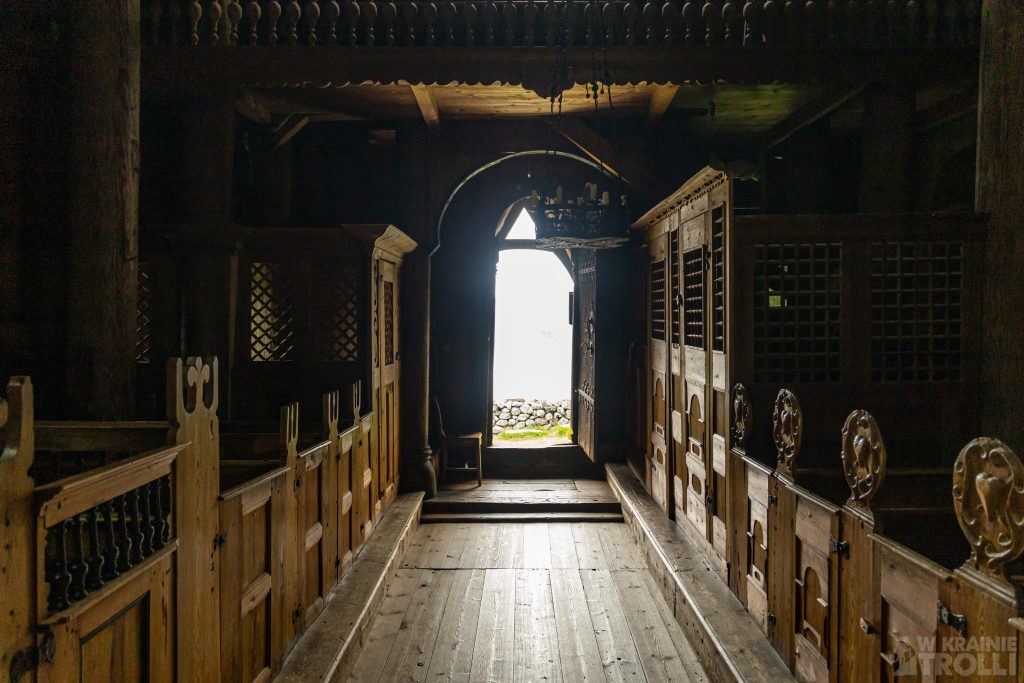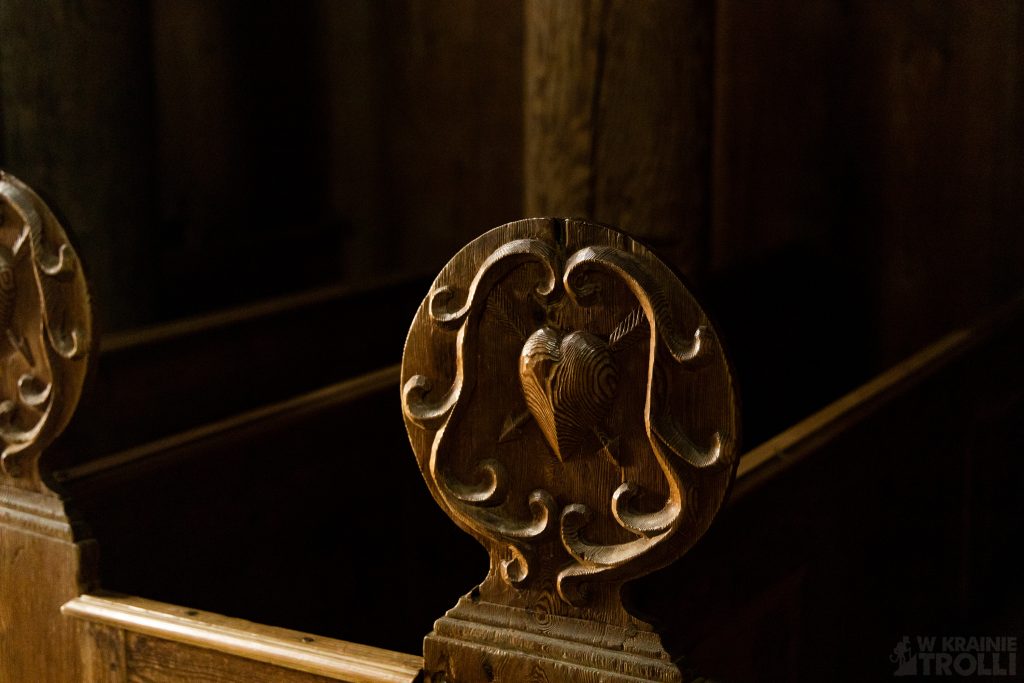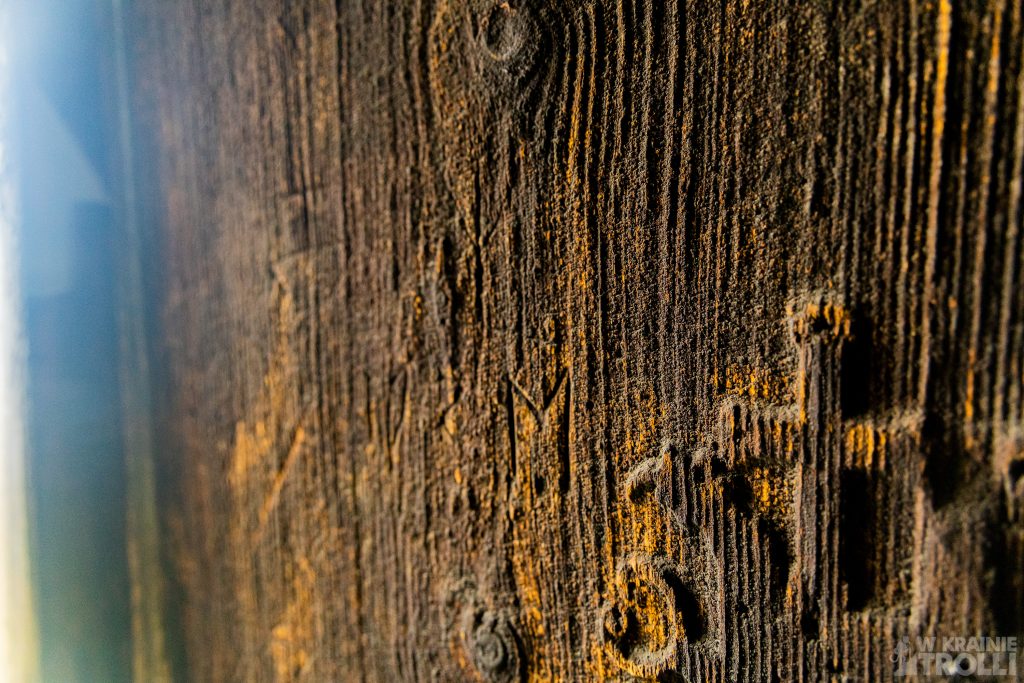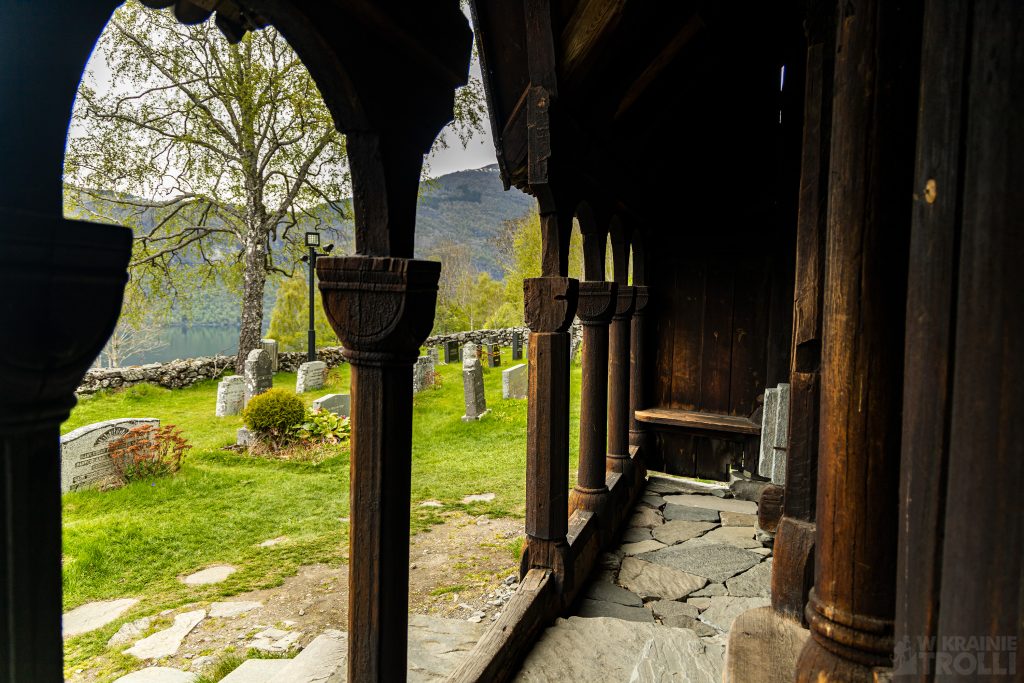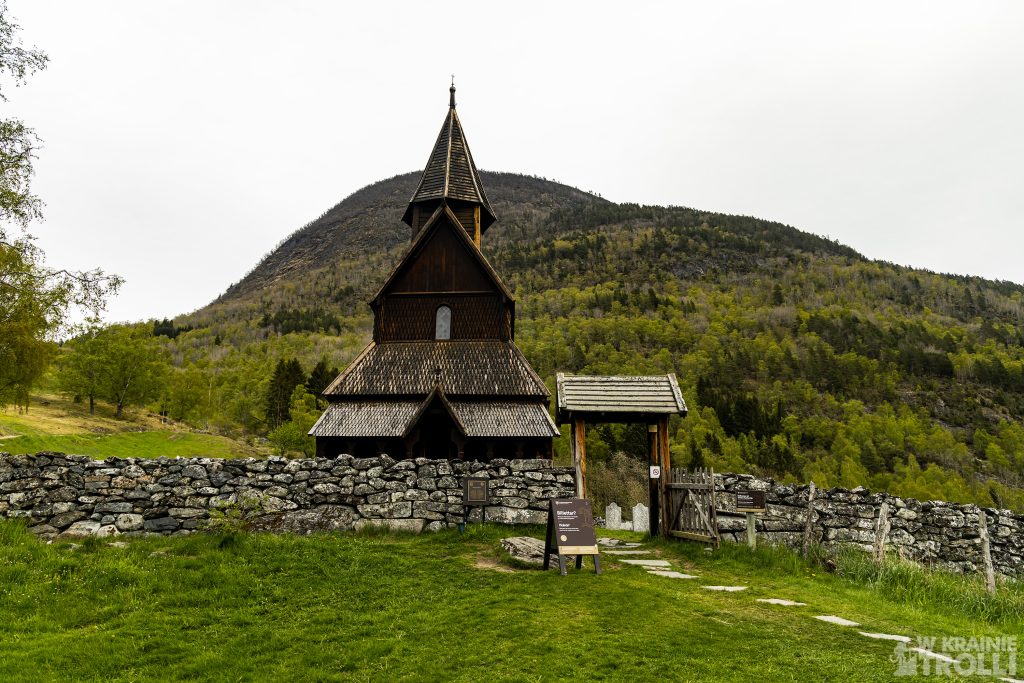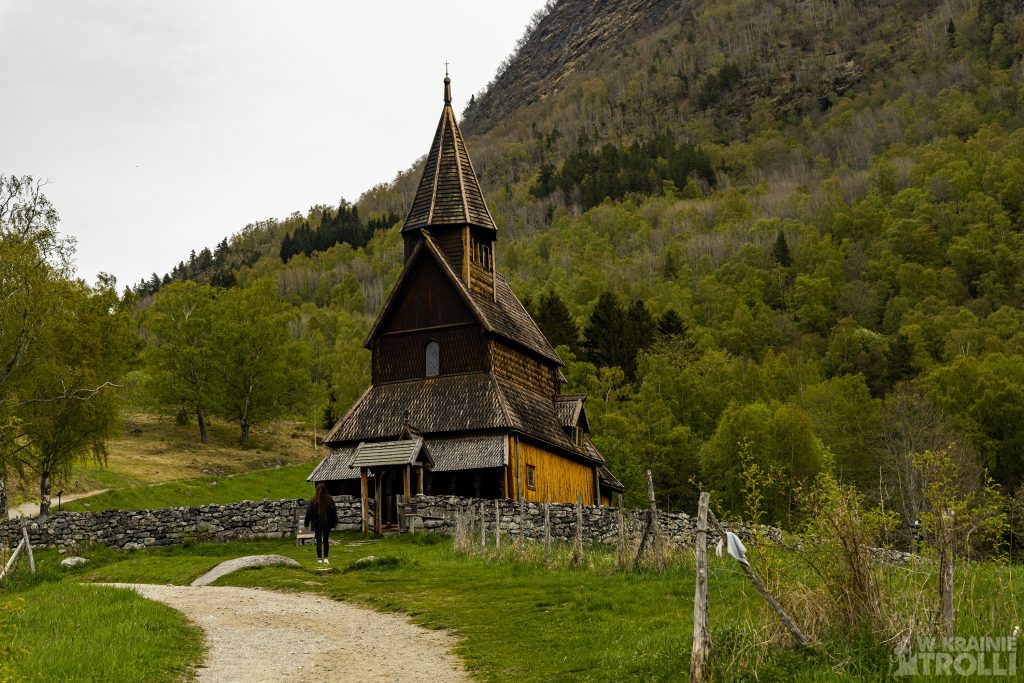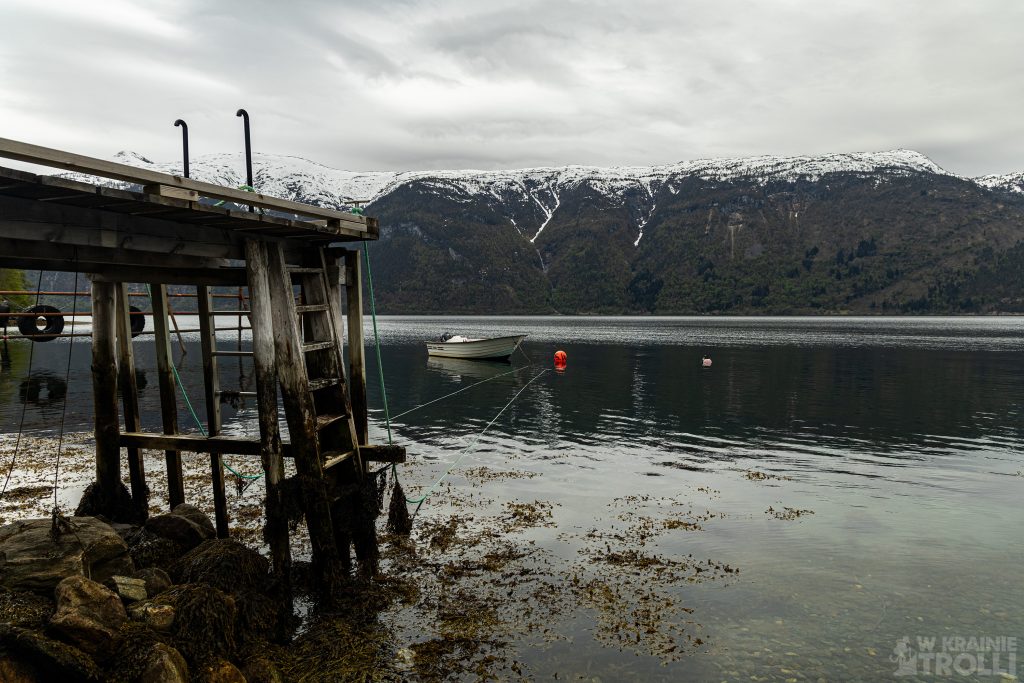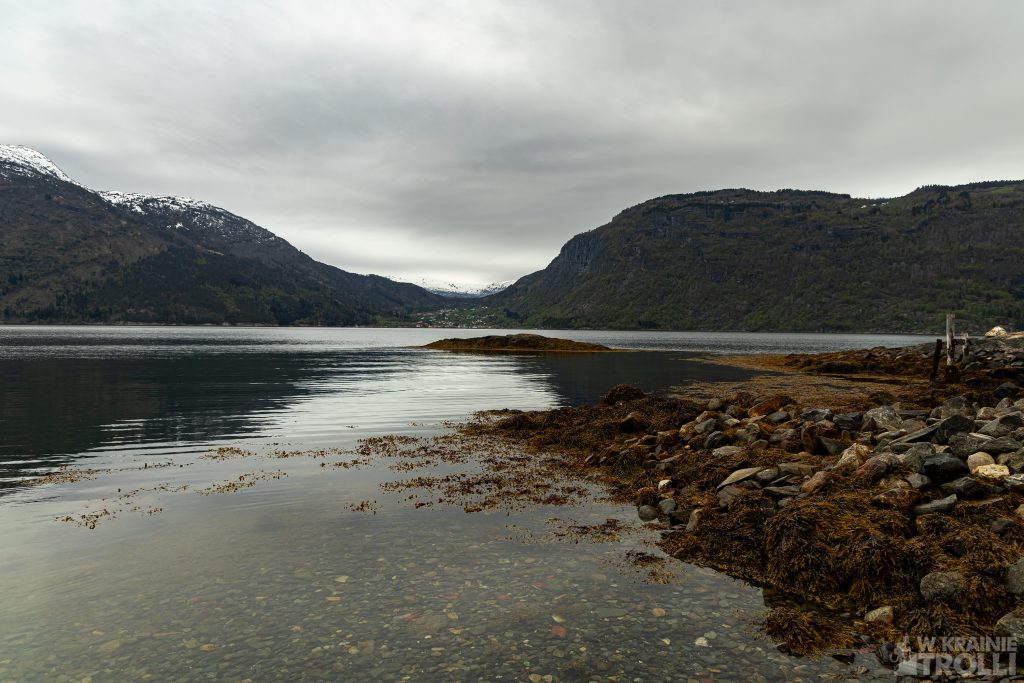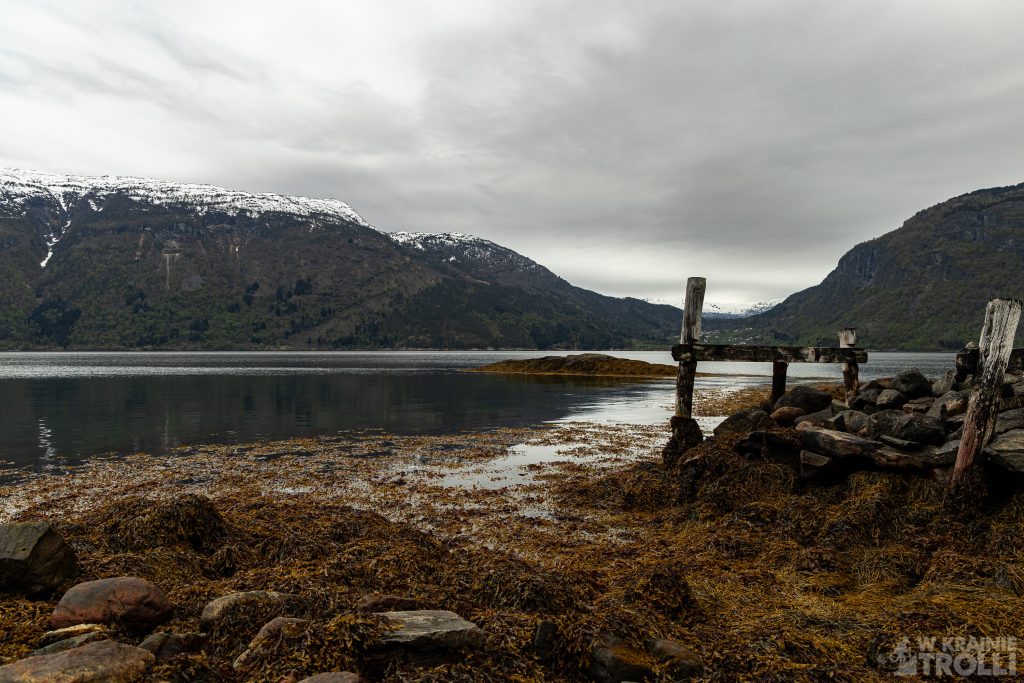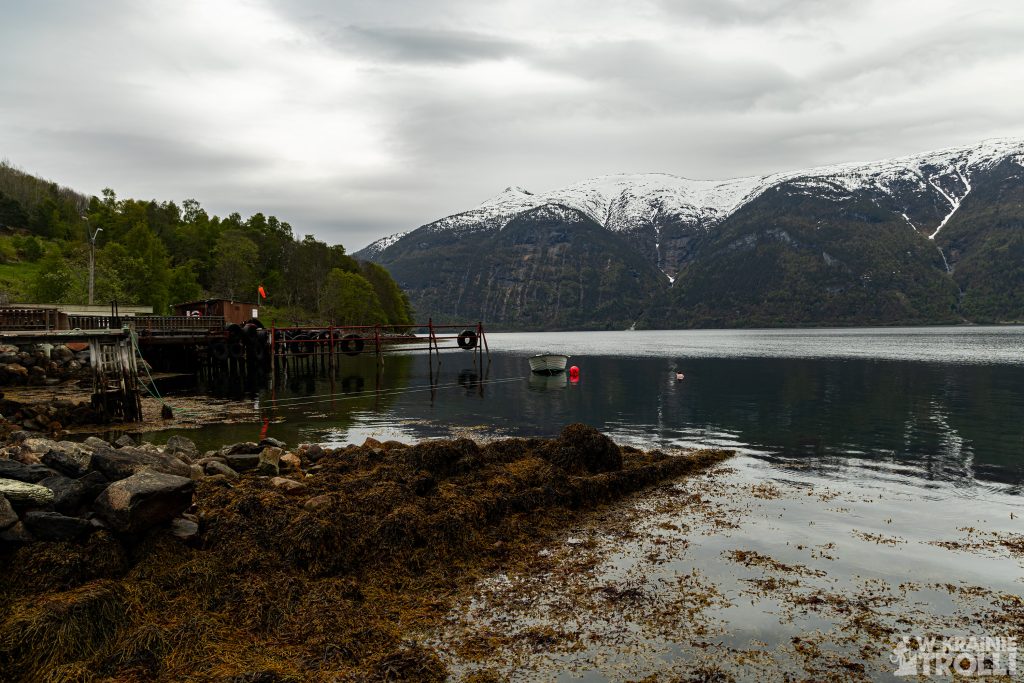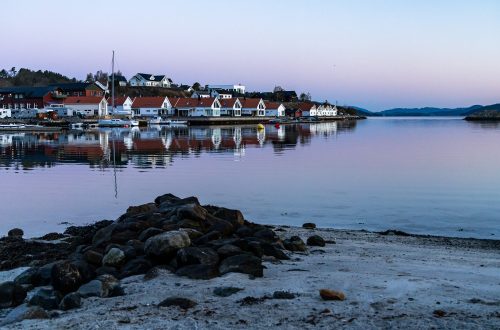
Urnes stavkirke
Spośród wszystkich 29 kościołów klepkowych (słupowych) zachowanych do naszych czasów, kościół w Urnes (Ornes) jest najstarszy i odznacza się najcenniejszymi, unikalnymi zabytkami. Został wpisany na listę dziedzictwa kulturowego UNESCO w 1979 roku. Położony na wzniesieniu ponad Lustrafjodem (najdalszym odgałęzieniem Sognefjordu) kościółek prezentuje naprawdę okazale na tle krajobrazu zachodniej Norwegii.
Kościół w Urnes, a właściwie w Ornes (norweskie O wymawia się jak U, stąd ktoś postanowił zmienić oficjalną nazwę świątyni, żeby przyjezdni mieli łatwiej) powstał w przybliżeniu w 1130 r. Tak jak i inne tego typu konstrukcje wzniesiono go na bazie pionowych, drewnianych słupów, wspartych na kamieniach (stąd nazwa kościół słupowy). W ciągu wielu lat (stuleci) istnienia, świątynię wielokrotnie przebudowywano, rekonstruowano i odnawiano. Wszystkie zewnętrzne drewniane elementy kościoła pokryto smołą w celu konserwacji powierzchni przed niszczejącymi warunkami środowiska. To dlatego północna elewacja kościołów słupowych jest zwykle czarna, a na południowej stronie widoczne są często gołe deski. Gorące, letnie słońce sprawia, że smoła spływa ze ścian, odsłaniając zabytkową konstrukcję.
Podobno wcześniejszy kościół nie posiadał wieży dzwonniczej. Ta stanowiła osobną konstrukcję, była usytuowana nieco dalej na wzgórzu i służyła nie tyle do zwoływania wiernych na nabożeństwo, ile do wszczynania alarmu, gdy dostrzeżono zbliżające się w oddali wrogie siły. Obecna wieża została dobudowana do kościoła później i wymagała dodatkowych belek wzmacniających wewnątrz.
Najcenniejszym fragmentem kościoła Urnes jest misternie rzeźbiony portal z około 1070 roku. Pierwotnie znajdował się on we wcześniejszym kościele, zbudowanym w tym samym miejscu. Gdy zastąpiono go obecnym, portal wraz z dwoma, podobnie rzeźbionymi deskami wkomponowano w północną ścianę budynku. Charakterystyczny kształt i wzornictwo uzyskało swoją nazwę jako styl Urnes, chociaż podobne motywy można spotkać również na przedmiotach odnalezionych w Szwecji, Danii czy w Irlandii.
Do wnętrza kościoła wiodą stare drewniane drzwi z żelaznym, zdobionym zamkiem. Na ich zewnętrznej stronie wciąż można dostrzec ślady wyrytych przed wiekami run. W środku drewniana podłoga prowadzi pomiędzy dwoma rzędami ławek z rzeźbionymi wykończeniami. Po lewej stronie zasiadały kobiety, po prawej mężczyźni. Kolumny, na których wspiera się konstrukcja kościoła mają tuż pod sklepieniem rzeźbienia przedstawiające postacie ludzkie lub zwierzęce sylwetki. Oryginalna, pochodząca z XII wieku tzw. Grupa Kalwaryjska to drewniane postacie ukrzyżowanego Chrystusa, Maryi oraz Jana apostoła jest kolejnym z ważnych i cennych zabytków. W prezbiterium można ujrzeć ołtarz z 1699 oraz fotel biskupa pochodzący z XII wieku.
Choć kościółek w Urnes nie należy do największych, a od wewnątrz wydaje się jeszcze mniejszy, można odczuć jak majestat, dostojność i długie wieki historii promieniują z tej niewielkiej i kruchej konstrukcji. Warto również zajrzeć do sklepiku z pamiątkami (to tam kupuje się bilety, jeśli chce się zajrzeć do wnętrza i posłuchać słów przewodnika). W jednym z pomieszczeń za szklanymi gablotami obejrzeć można kilka interesujących przedmiotów z ubiegłych wieków.
Miasteczko Solvorn po przeciwnej stronie Lustrafjordu. | Town of Solvorn seen from the other shore of Lustrafjoreden.
Jedyna rzeźbiona kolumna kościoła i zamek drzwi wejściowych. | The only one carved column and lock of main door.
Portal z XI wieku na północnej ścianie. | Portal from the 11th century on the northern wall.
Jedna z kolumn z rzeźbionymi figurami zwierząt i mitycznych stworzeń. | One of the columns with carved figures of animals and mythical creatures.
Grupa Kalwaryjska. | The Calvary Group.
Prezbiterium. | The chancel.
Runy na zewnętrzej stronie drzwi. | Runes on the outside of the door.
Among all 29 stave churches preserved to our times, the church in Urnes (Ornes) is the oldest and has the most valuable, unique monuments. It was inscribed on the UNESCO cultural heritage list in 1979. Located on a hill above Lustrafjord (the farthest branch of the Sognefjord), the church looks really impressive against the landscape of western Norway.
The church in Urnes, or rather in Ornes (Norwegian O is pronounced like U, hence someone decided to change the official name of the temple to make life easier for visitors) was built approximately in 1130. Like other structures of this type, it was built on the basis of vertical, wooden pillars, supported on stones (hence the name pillar church). During many years (centuries) of existence, the temple was repeatedly rebuilt, modified and renovated. All external wooden elements of the church were covered with tar to preserve the surface from the deteriorating environmental conditions. This is why the north fasade of stave churches is usually black and the south side often shows bare planks. The hot summer sun makes the tar run off the walls, revealing the historic structure.
Apparently, the earlier church did not have a bell tower. This one was a separate structure and was located a little further up the hill and was used not so much to call the faithful to a service, but to raise the alarm when hostile forces were seen approaching in the distance. The current tower was added to the church later and required additional reinforcing beams inside.
The most valuable fragment of the Urnes church is the intricately carved portal from around 1070. It was originally located in an earlier church, built on the same site. When it was replaced with the current one, the portal with two similarly carved boards was incorporated into the northern wall of the building. The characteristic shape and design got its name as the Urnes style, although similar motifs can also be found in Sweden, Denmark and Ireland.
An old wooden door with an iron, decorated lock leads to the interior of the church. On their outer side you can still see traces of runes carved centuries ago. Inside, a wooden floor leads between two rows of benches with carved trims. Women sat on the left, men on the right. The columns on which the structure of the church is supported have carvings depicting human or animal figures just below the vault. Original, dating from the 12th century, the so-called The Calvary Group, wooden figures of the crucified Christ, Mary and John the apostle, is another important and valuable monument. In the chancel you can see an altar from 1699 and a bishop’s chair from the 12th century.
Although the church in Urnes is not the largest, and from the inside it seems even smaller, you can feel how majesty, dignity and long centuries of history radiate from this small and fragile structure. It is also worth visiting the visitor’s centre (this is where you buy tickets if you want to look inside and listen to the words of the guide). In one of the rooms behind glass cases, you can see some interesting objects from past centuries.


